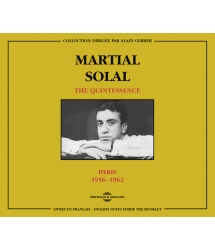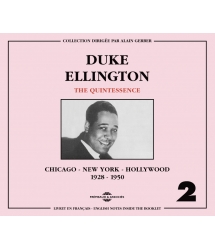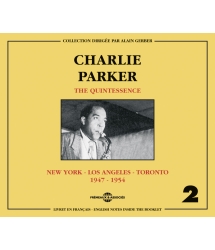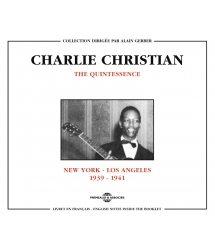- Our Catalog
- Philosophy
- Philosophers of the 20th century and today
- History of Philosophy (PUF)
- Counter-History and Brief Encyclopedia by Michel Onfray
- The philosophical work explained by Luc Ferry
- Ancient thought
- Thinkers of yesterday as seen by the philosophers of today
- Historical philosophical texts interpreted by great actors
- History
- Books (in French)
- Social science
- Historical words
- Audiobooks & Literature
- Our Catalog
- Jazz
- Blues
- Rock - Country - Cajun
- French song
- World music
- Africa
- France
- Québec / Canada
- Hawaï
- West Indies
- Caribbean
- Cuba & Afro-cubain
- Mexico
- South America
- Tango
- Brazil
- Tzigane / Gypsy
- Fado / Portugal
- Flamenco / Spain
- Yiddish / Israel
- China
- Tibet / Nepal
- Asia
- Indian Ocean / Madagascar
- Japan
- Indonesia
- Oceania
- India
- Bangladesh
- USSR / Communist songs
- World music / Miscellaneous
- Classical music
- Composers - Movie Soundtracks
- Sounds of nature
- Our Catalog
- Youth
- Philosophy
- News
- How to order ?
- Receive the catalog
- Manifesto
- Dictionnary











- Our Catalog
- Philosophy
- Philosophers of the 20th century and today
- History of Philosophy (PUF)
- Counter-History and Brief Encyclopedia by Michel Onfray
- The philosophical work explained by Luc Ferry
- Ancient thought
- Thinkers of yesterday as seen by the philosophers of today
- Historical philosophical texts interpreted by great actors
- History
- Books (in French)
- Social science
- Historical words
- Audiobooks & Literature
- Our Catalog
- Jazz
- Blues
- Rock - Country - Cajun
- French song
- World music
- Africa
- France
- Québec / Canada
- Hawaï
- West Indies
- Caribbean
- Cuba & Afro-cubain
- Mexico
- South America
- Tango
- Brazil
- Tzigane / Gypsy
- Fado / Portugal
- Flamenco / Spain
- Yiddish / Israel
- China
- Tibet / Nepal
- Asia
- Indian Ocean / Madagascar
- Japan
- Indonesia
- Oceania
- India
- Bangladesh
- USSR / Communist songs
- World music / Miscellaneous
- Classical music
- Composers - Movie Soundtracks
- Sounds of nature
- Our Catalog
- Youth
- Philosophy
- News
- How to order ?
- Receive the catalog
- Manifesto
- Dictionnary
28th OF JULY 1961
Ref.: FA5635
Label : Frémeaux & Associés
Total duration of the pack : 2 hours 7 minutes
Nbre. CD : 2
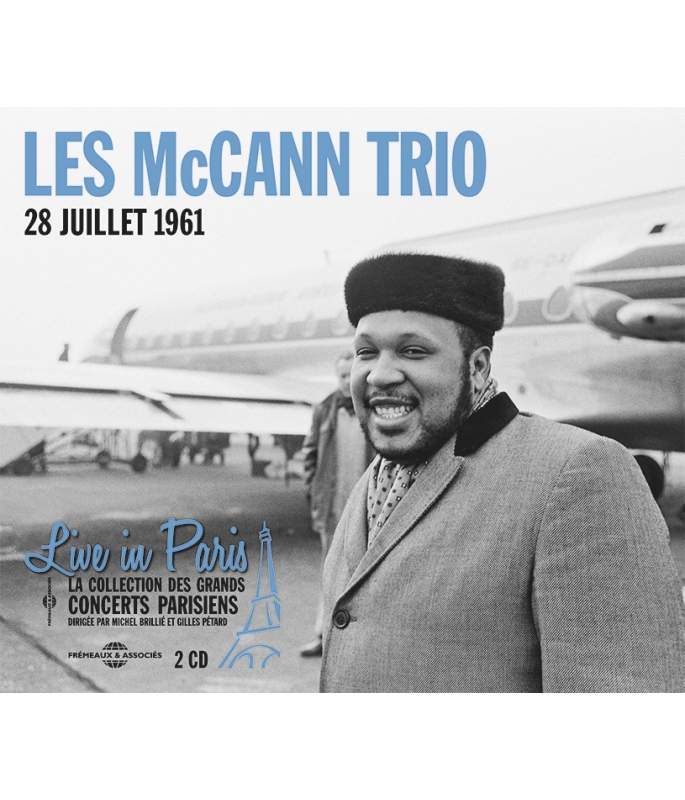
28th OF JULY 1961
In the early Sixties Les McCann was a pioneer of “soul jazz”. Critics called it commercial, but the music drew efficient melodies from blues, gospel and rhythm & blues.
The young pianist McCann signed with Pacific Jazz in 1960 and toured Europe with his Trio on ‘61 and ‘62, opening for the orchestras of Ray Charles and Count Basie.
The “Live in Paris” collection gives us the opportunity to listen to these great concerts again, and also hear rare recordings like this one, recorded in July ‘61 at the Chameleon club in Paris, a legendary Left Bank nightspot.
The inspired McCann also growls characteristically, kindly admonishing his audience when they whistle along with the melody, and everyone has a good time.
The jazz is soulful in this set, and you can almost see the club’s damp walls beneath wreaths of smoke. A rare document that transports the listener, thanks to a generous, swinging pianist.
Patrick FRÉMEAUX
DIRECTION ARTISTIQUE : GILLES PÉTARD ET MICHEL BRILLIÉ
DROITS : BODY & SOUL
LICENCIE A FREMEAUX & ASSOCIES.
CD1 : A LITTLE 3/4 TIME FOR GOD & CO • VACUSHNA • I AM LOVE • EVERYTHING HAPPENS TO ME • THE TRUTH • LITTLE GIRL BLUE • THEY CAN’T TAKE THAT AWAY FROM ME • VACUSHNA (REPRISE) • HOW HIGH THE MOON • I’LL TAKE ROMANCE.
CD 2 : UNIDENTIFIED • OUT OF THIS WORLD • OH THEM GOLDEN GATERS • RED SAILS IN THE SUNSET • SOMEONE STOLE MY CHITLINGS • DEED I DO • DORENE DON’T CRY • COME ON AND GET THAT CHURCH.
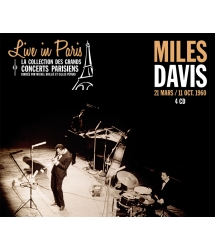
LIVE IN PARIS - 21 MARS / 11 OCTOBRE 1960
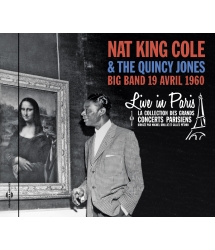
19th OF APRIL 1960
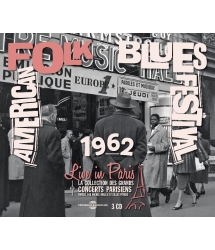
JOHN LEE HOOKER • T-BONE WALKER • SONNY TERRY &...



-
PisteTitleMain artistAutorDurationRegistered in
-
1A Little 3/4 Time For God And CoLes McCann, Herbie Lewis, Ron Jefferson00:05:171961
-
2VacushnaLes McCann, Herbie Lewis, Ron Jefferson00:05:281961
-
3I Am LoveLes McCann, Herbie Lewis, Ron Jefferson00:08:201961
-
4Everything Happens To MeLes McCann, Herbie Lewis, Ron JeffersonT. Adair00:05:191961
-
5The TruthLes McCann, Herbie Lewis, Ron Jefferson00:07:321961
-
6Little Girl BlueLes McCann, Herbie Lewis, Ron JeffersonLorenz Hart00:08:161961
-
7They Can't Take That Away From MeLes McCann, Herbie Lewis, Ron JeffersonGeorge & Ira Gershwin00:03:011961
-
8Vacushna (Reprise)Les McCann, Herbie Lewis, Ron Jefferson00:02:001961
-
9How High The MoonLes McCann, Herbie Lewis, Ron JeffersonNancy Hamilton00:11:331961
-
10I'll Take RomanceLes McCann, Herbie Lewis, Ron JeffersonOscar Hammerstein II00:05:391961
-
PisteTitleMain artistAutorDurationRegistered in
-
1UnidentifiedLes McCann, Herbie Lewis, Ron Jefferson00:09:591961
-
2Out Of This WorldLes McCann, Herbie Lewis, Ron JeffersonJohnny Mercer00:10:291961
-
3Oh! Them Golden GatersLes McCann, Herbie Lewis, Ron Jefferson00:04:361961
-
4Red Sails in The SunsetLes McCann, Herbie Lewis, Ron JeffersonJimmy Kennedy00:09:201961
-
5Someone Stole My ChitlingsLes McCann, Herbie Lewis, Ron JeffersonJimmy Kennedy00:05:101961
-
6Deed I DoLes McCann, Herbie Lewis, Ron JeffersonW. Hirsch00:10:131961
-
7Dorene Don't CryLes McCann, Herbie Lewis, Ron Jefferson00:05:471961
-
8Come On And Get That ChurchLes McCann, Herbie Lewis, Ron Jefferson00:09:061961
Les McCann trio FA5635
Les McCann TRIO
28 Juillet 1961
Live in Paris
La collection des grands concerts parisiens
Dirigée par Michel Brillié et Gilles Pétard
Live in Paris 28 Juillet 1961:
Les McCann Trio Live at the Caméléon Club,
Paris France
Le Soul à l’assaut
« Pas de sifflette… » Les McCann admoneste gentiment une première fois l’audience pour calmer les quelques jazz fans mélodistes attablés devant un whisky-coca au Caméléon ce soir du 28 juillet 1961. Il est vrai que «How High the Moon», le standard de Les Paul & Mary Ford que le Les McCann Ldt (c’est le nom du trio à l’époque) est en train d’entamer se prête bien à ce karaoké avant l’heure. Les noctambules ne se calmant pas, McCann renouvelle son avertissement sur un ton plus ferme : « No whistling! » Ce n’est quand même pas rien, ce trio. Quatre jours auparavant, du 18 au 24 juillet, le groupe a été la révélation du deuxième festival de jazz d’Antibes/Juan-les-Pins. A leur arrivée sur la Côte d’Azur, ils sont pratiquement inconnus en Europe. Quand ils en repartent, ils sont devenus quasiment les stars de la manifestation. Au même programme que Ray Charles, lui aussi pour la première fois en France, Count Basie et son grand orchestre, le trio vocal Lambert Hendricks & Ross, Sister Rosetta Tharpe… Leur musique, mélange efficace de blues, gospel et grognements à la Erroll Garner, a fait un tabac. McCann a cassé la baraque : le soul nouveau est arrivé…
Retour sur un parcours sinueux. Le petit Les est né à Lexington, au milieu des vertes collines du Kentucky. Gamin, une vieille dame du voisinage lui donne quelques rudiments de piano vite oubliés. Plus tard l’adolescent fait partie de l’orchestre de son lycée. «Le rythme a été un élément intégrant de mon enfance » confie-t-il à Chris Slaweski d’All About Jazz en Juin 2015. « Mon truc, c’était le Hambone », une forme de danse très rythmée où l’on tape du pied en se frappant les bras, les cuisses et les joues tout en effectuant des pas de danse avec une jambe en l’air. « Le rythme c’est mon petit nom… J’adorais regarder les grands danseurs de claquettes comme Bill Robinson quand il se produisait au théâtre juste à côté de chez moi. L’endroit faisait partie du « Chitlin’ Circuit. »1
Au début des années cinquante, Les McCann s’enrôle dans la Navy. Il en profite pour se remettre sérieusement au piano. Comme il est posté dans une base au nord de la Californie, il se familiarise avec les clubs de San Francisco. Il va écouter Miles Davis, il se passionne pour Erroll Garner…. D’où sa manière de fredonner/grommeler la mélodie qu’il joue au piano. Sous l’uniforme, il gagne un concours de chant qui l’envoie jusqu’au plateau de l’émission TV d’Ed Sullivan. Sans plus… Le marin a l’esprit frondeur. A sa sortie de la Marine, il refuse la suggestion de Miles Davis de rejoindre le groupe de Cannonball Adderley et préfère former son propre trio. La première année de la décennie soixante le propulse comme chef de file de ce style soul jazz, avec ses LPs live captés à Los Angeles ou San Francisco.
Et puis, un an après, voici la consécration internationale avec le festival de jazz d’Antibes. « C’est le meilleur public que j’ai eu ! » avoue-t-il à la presse française… Succès public que les spécialistes admettent avec un ou deux bémols :
« Chaque soir, à l’entracte, on s’arrachait ses disques. Chaque soir, Les McCann accueillait avec une très visible satisfaction la progression des ventes, et, habilement, glissait au micro quelques renseignements concernant ces dits disques… Homme d’affaires averti et qui saura organiser au mieux de ses intérêts sa carrière, Les McCann n’est pourtant pas le vilain businessman des caricatures. Ceux qui lui ont parlé louent son ouverture d’esprit, son attachante franchise, sa connaissance très sûre de l’esthétique musicale. Les McCann fit pendant quatre soirs un étalage très complet de ses possibilités – et de ses manies. Esprit churchy et jeu bluesy, le style de Les McCann atteint une sorte de rigidité et de pureté
classiques dans son outrance soul même. » (Jean Robert Masson, Jazz Magazine Septembre 1961)
Jean Tronchot, dans Jazz Hot du même mois, donne son interprétation du phénomène McCann :
« Les McCann est un petit marrant sympathique qui prend visiblement plaisir à jouer. Les trois noirs, Les McCann (p), Herbie Lewis (b), et Ron Jefferson (d) ont été subitement découverts par le public de Juan-les-Pins, venu pour Ray Charles, Count Basie. C’est cet effet de surprise, ce choc, qui expliquent sans doute son triomphe. Il a, somme toute, assez peu d’idées, mais beaucoup de swing…/.. En tout cas, il ne perd pas une occasion de jouer. Plusieurs fois, nous l’avons entendu faire le bœuf, par exemple avec le L.H.R. trio, au Pam-Pam vers quatre heures du matin. »
Les McCann, interviewé en Novembre 2015 par téléphone depuis la Californie, se souvient encore de ce moment, malgré une attaque cardiaque qui lui embrouille un peu la mémoire: « J’étais super jeune, et très angoissé de passer après Ray Charles. C’était la première fois qu’on jouait devant un public aussi nombreux. Je me rappelle que les organisateurs nous ont demandé de quitter la scène au bout de vingt minutes, mais les gens en redemandaient encore et encore… C’est l’un de ces moments où l’on remercie Dieu de l’avoir vécu. »
Même succès à Paris, au Caméléon. Un triomphe où l’on a dû le premier soir « reculer les murs du caveau pour admettre les amateurs désireux de faire connaissance avec la dernière découverte du jazz américain » (Jazz Hot). Le club fait partie des endroits réguliers des jazz fans parisiens. Il y a sans doute moins de stars qu’ailleurs, comme au Club Saint Germain avec Art Blakey, au Blue Note avec Bud Powell, aux Trois Mailletz avec Memphis Slim. Plus tard Chet Baker s’installera à une encablure, au Chat qui Pêche… Le patron vietnamien du Caméléon, lui, propose des house bands bien français. Henri Renaud, par exemple, en est un habitué. Quand il est retenu ailleurs, un jeune pianiste autodidacte prend le tabouret : Bernard de Bosson. Son souvenir du Caméléon : « C’était une grande et longue cave voutée, avec un minibar dans un renfoncement, des tables….Je jouais avec Dominique Chamson et j’accompagnais Guy Lafitte… Boîte mythique, avec, au rez-de-chaussée, un bar mais en même temps une discothèque où tu pouvais demander au mec de te mettre un disque de Sarah Vaughan… Et au sous-sol il y avait la cave où on jouait, - Il y avait Michel Hausser au vibraphone – et quand on jouait, souvent Bud Powell venait jouer avec nous. Quand il s’avançait vers moi, je savais qu’il voulait se mettre au piano, alors moi, je rentrais dans le mur…» De Bosson, devenu PDG des disques Warner-Elektra-Atlantic, éditera de nombreux albums de Les McCann dans les années 70.
Aujourd’hui, un bon demi-siècle plus tard, Les McCann fait encore 2 ou 3 gigs par an, et reste aussi actif et créatif par ses aquarelles et photographies. Il a sorti en avril 2015 “Invitation to Openness”2 un grand album de ses photos de jazz captées pendant la période 1960 /1980, des clichés intimes de Stevie Wonder, Nina Simone, Sammy Davis Jr., John Coltrane, Aretha Franklin, Nancy Wilson, Quincy Jones, Tina Turner, Miles Davis, Cannonball Adderley, Louis Armstrong, Count Basie, B.B. King, Erroll Garner, Stanley Clarke, Bill Evans, Lionel Hampton…
« Invitation to Openness », était déjà le titre d’un album du pianiste de 1972 : « Cette phrase, «Invitation to Openness » : c’est le symbole de ce que suis… Dans ma vie pour moi maintenant, il a deux choses : l’amour ou la peur. C’est le seul choix que vous pouvez faire aujourd’hui. Voilà ce que j’ai appris. Ouvrez votre cœur à l’amour à tout moment ; ne dites jamais plus : non ! »
Et maintenant, à vous d’ouvrir la porte du Caméléon, ça va commencer. Et puis, vous pouvez siffloter, si ça vous chante…
Michel BRILLIÉ
© FRÉMEAUX & ASSOCIÉS 2016
1. Chitlin’ Circuit : la « tournée des tripes ». Les « Chitterlings ou Chitlins sont un plat typiquement soul food du sud des USA. Le Chitlin’ Circuit désigne l’itinéraire des tournées des artistes afro-américains, les villes et les endroits où ils pouvaient se produire sans être victimes de ségrégation ou d’agressions. Du début du 19e siècle jusqu’aux sixties du 20e, ces tournées passaient essentiellement dans des zones situées dans les états du Sud, de l’Est et du Midwest des U.S.A. Les salles les plus célèbres étaient l’Apollo de Harlem, le Regal de Chicago, Le Howard de Washington, l’Uptown de Philadelphie…
2. « Invitation to Openness », par Alan Abraham & Pat Thomas, Fantagraphics Books, 2015.
Live in Paris, July 28, 1961:
Les McCann Trio Live at the Caméléon Club,
Paris France
Soul on top
“No whistling.” It’s a rather kind Les McCann that scolds the audience that night of July 28,1961, as some of the patrons sipping their Bacardi & Coke have started to hum the world famous Les Paul & Mary Ford standard, “How High the Moon”. Actually, this number opening the Les McCann trio set lends itself well to this type of karaoke sing-along… Since the Parisian night birds do not pipe down, McCann warns them again in a firmer tone: “Hey! No whistling!” After all, these guys are really something… Four days ago, from July 18 to 24, the three musicians have become the revelation of the second Jazz Festival in Antibes/Juan-les-Pins. When they arrived on the Côte d’Azur, hardly anybody knew anything about them in Europe. When they left, they had virtually been the stars of the show, on par with other musicians, such as Ray Charles, for the first time in France, Count Basie and his band, the vocal trio of Lambert, Hendricks & Ross, Sister Rosetta Tharpe…Their music, an efficient blend of blues, gospel and vocal growling and mumbling à la Garner, was a big hit. McCann stole the show: a new soul had arrived…
Flashback on a long and winding route. Little Les was born in Lexington, among the Kentucky rolling green hills. As a child, a nice old lady from his neighborhood gave him some piano basics, soon to be forgotten. Later the teenager took part in his local high school marching band. “Rhythm was part of my childhood. All we did was rhythm things”, he confides in June 2015 to Chris Slaweski of All about Jazz.com. “I grew up doing a rhythm thing they used to call the Hambone”, an American style of dance that involves stomping as well as slapping and patting the arms, legs, chest, and cheeks, while turning counter-clockwise, often with one leg raised. “Rhythm is my middle name. That’s what we were raised on in Kentucky. That’s what it was all about. And tap dancing—watching great dancers like Bill Robinson at the theater right around the corner from my house, live shows. The Chitlin’ Circuit1, it was called.”
At the onset of the fifties, Les McCann joins the Navy. He also starts playing the piano again, this time more seriously. As he is stationed at a northern California naval base, he takes every opportunity to visit San Francisco’s jazz clubs, where he is first exposed to Miles Davis and is influenced by Erroll Garner. He shares with the musician the same way of growling the tune he is playing on the piano. When a sailor, he enters a talent contest in the Navy and wins as a singer, which gets him a TV appearance on the Ed Sullivan Show. Always a bit of a rebel, the ex-Sailorman turns down a Miles Davis’ suggestion to have him join the Cannonball Adderley combo and prefers to form his own trio. The first year of the sixties propels the pianist as a leader of the soul jazz trend, recording live albums in Los Angeles and San Francisco.
And then, one year later, here comes international fame at the Antibes Jazz Festival. “This is the best audience, I ever had!” he tells the French press. A public acclaim slightly toned down by critics:
“Every night, at intermission, people would buy his records like hot cakes. Each and every night, McCann would witness with great satisfaction the growing sales, and deftly gives some information about his records at the stage mike… While he appeared as a shrewd businessman who will definitely take care of his career, McCann is not, however the greedy rogue that some depict. People that know him praise his open-mindedness, his charming frankness, his excellent knowledge of the musical aesthetic. During four nights, McCann displayed his comprehensive abilities – and obsessions. With its churchy feeling and bluesy playing, McCann’s style reaches some kind of classic rigidity and pureness to the excess.” (Jean Robert Masson, Jazz Magazine, September 1961)
In the same month issue of Jazz Hot Magazine, Jean Tronchot gives his understanding of the McCann phenomenon: “Les McCann is a funny little guy who obviously enjoys playing. The three black men, Les McCann (p), Herbie Lewis (b), and Ron Jefferson (d) have suddenly been discovered by the Juan-les-Pins crowd, here essentially to see Ray Charles or Count Basie. This element of surprise, this shock account for his triumph. On the whole, the man has few ideas, but a lot of swing …/… Anyway, he takes every opportunity to play. On several occasions, we heard him jam with Lambert Hendricks & Ross, around 4:00 AM, at the Pam-Pam Club.”
When interviewed in November 2015, he had a vivid recollection of that time, in spite of a stroke that somewhat blurs his memory: “Then I was very young and nervous going on after Ray Charles. It was the first time I played in front of a whole bunch of people. I remember the promoter told me to get off the stage and all we could play was twenty minutes, but the people asked for more and I ended playing my music to people who loved it… It’s one of those moments when you thank God it happened.”
Echoing this success were the two nights at the Caméléon Club in Paris. It was such a smash that on the first gig “they had to pull back the walls of the jazz cellar to let the eager fans in to have them experience the latest discovery in American jazz” (Jazz Hot). This Latin Quarter watering hole is a familiar place among Parisian jazz aficionados. Perhaps you don’t find as many famous musicians here, like Art Blakey at the Club Saint Germain, Bud Powell at the Blue Note, Memphis Slim at the Trois Mailletz. Some time later, Chet Baker will establish himself a stone throw from there; at the Chat qui Pêche…The Vietnamese owner of the Caméléon is more into French house bands. Henri Renaud, for one, is a regular. When he is not available, a young self-taught pianist takes over: Bernard de Bosson. His remembrance of the Caméléon: “It was a large and long arched cellar, with a small bar in a recess, some tables… I used to play with Dominique Chamson, or back Guy Lafitte… A real cult place: at street level, a bar that doubled as a disco, you could ask the guy to play some Sarah Vaughan album… And in the basement, that’s where we performed – There was also Michel Hausser on vibes – sometimes when we played, Bud Powell would join us. When he walked gingerly towards my stool, I knew he wanted to play the piano, so I would gradually dissolve into the wall…” De Bosson later became C.E.O. of Warner-Elektra-Atlantic Records and issued several Les McCann albums in the seventies.
Today, a good fifty years later, Les McCann still plays two or three gigs per year, and stays active/creative with his watercolor paintings and photographs. His latest book, Invitation to Openness2 was published in April 2015. It is a comprehensive collection of his jazz photos shot between 1960 and 1980, some intimate pictures of Stevie Wonder, Nina Simone, Sammy Davis Jr., John Coltrane, Aretha Franklin, Nancy Wilson, Quincy Jones, Tina Turner, Miles Davis, Cannonball Adderley, Louis Armstrong, Count Basie, B.B. King, Erroll Garner, Stanley Clarke, Bill Evans, and Lionel Hampton…
Invitation to Openness was already the title of one of McCann’s albums in 1972: “That phrase, Invitation to Openness, symbolizes what I am. I look at life now as only two things, love or fear. Make that choice in everything you do. I’ve learned that. Open up your heart to love at all times. Never say no again.”
And now, open the door to the Caméléon, the gig’s just about to start. And hey, you can whistle along, if you feel like it.
Michel BRILLIÉ
© FRÉMEAUX & ASSOCIÉS 2016
1. The “Chitlin’ Circuit” is the collective name given to the string of performance venues throughout the eastern, southern, and upper Midwest areas of the United States that were safe and acceptable for African American musicians, comedians, and other entertainers to perform during the age of racial segregation in the United States (from at least the early 19th century through the 1960s).
2. Invitation to Openness, by Alan Abraham & Pat Thomas, Fantagraphics Books, 2015.
Live in Paris 28 Juillet 1961:
Les McCann live at the Caméléon Club,
Paris France
CD1
1. A Little 3/4 Time for God & Co (Les McCann) 5’17
2. Vacushna (Les McCann) 5’28
3. I Am Love (Cole Porter) 8’20
4. Everything Happens to Me (Tom Adair / Matt Dennis) 5’19
5. The Truth (Les McCann) 7’32
6. Little Girl Blue (Lorenz Hartz / Richard Rodgers) 8’16
7. They Can’t Take That Away from Me (Ira Gershwin / George Gershwin) 3’01
8. Vacushna (Reprise) (Les McCann) 2’00
9. How High the Moon (Nancy Hamilton / Morgan Lewis) 11’33
10. I’ll Take Romance (Oscar Hammerstein II / Ben Oakland) 5’39
CD 2
1. Unidentified (Les McCann) 9’59
2. Out of This World (Harold Arlen / Johhny Mercer) 10’29
3. Oh Them Golden Gaters (Les McCann) 4’36
4. Red Sails in the Sunset (Jimmy Kennedy / Hugh Williams) 9’20
5. Someone Stole My Chitlings (Les McCann) 5’10
6. Deed I Do (Walter Hirsch / Fred Rose) 10’13
7. Dorene Don’t Cry (Les McCann) 5’47
8. Come on and Get That Church (Les McCann) 9’06
Recorded by:
Europe N°1 Technical Staff
Recording Date:
July 28,1961
Recording Place:
Cameléon Jazz Club, Paris, France
Produced by:
Daniel Filipacchi & Frank Ténot
Personnel:
Les McCann piano
Herbie Lewis bass
Ron Jefferson drums
Dedicated to Claude Boquet, Bill Dubois, Jean Claude, Philippe Moch and the gang
La collection Live in Paris :
Collection créée par Gilles Pétard pour Body & Soul
et licenciée à Frémeaux & Associés.
Direction artistique et discographie : Michel Brillié, Gilles Pétard.
Coordination : Augustin Bondoux.
Conception : Patrick Frémeaux, Claude Colombini.
Fabrication et distribution : Frémeaux & Associés.
Les McCann est au début des années 1960 l’un des pionniers du soul jazz, courant commercial selon certains, qui puise des mélodies efficaces dans le rhythm & blues, le gospel et du blues. Jeune pianiste, il signe avec la firme Pacific Jazz en 1960 et entame une tournée européenne avec son trio en 1961 et 1962, à travers laquelle il côtoie les orchestres de Ray Charles et de Count Basie. La collection Live in Paris permet de retrouver les grands concerts parisiens, mais également des enregistrements rares, plus confidentiels comme celui-ci. Enregistré en juillet 1961 au Caméléon, mythique boite de jazz de la Rive Gauche, on y entend un Les McCann inspiré grommeler les mélodies, admonester gentiment un public mélomane, qui sifflote les mélodies. Un coffret ‘soulful’, où l’on perçoit volutes des fumées de cigarettes, ressent la moiteur des murs du caveau et où l’on est transporté par la générosité et le swing du pianiste. Un document rare.
Patrick Frémeaux
In the early Sixties Les McCann was a pioneer of “soul jazz”. Critics called it commercial, but the music drew efficient melodies from blues, gospel and rhythm & blues. The young pianist McCann signed with Pacific Jazz in 1960 and toured Europe with his Trio on ‘61 and ‘62, opening for the orchestras of Ray Charles and Count Basie. The “Live in Paris” collection gives us the opportunity to listen to these great concerts again, and also hear rare recordings like this one, recorded in July ‘61 at the Chameleon club in Paris, a legendary Left Bank nightspot. The inspired McCann also growls characteristically, kindly admonishing his audience when they whistle along with the melody, and everyone has a good time. The jazz is soulful in this set, and you can almost see the club’s damp walls beneath wreaths of smoke. A rare document that transports the listener, thanks to a generous, swinging pianist.
Patrick FRÉMEAUX
La collection « Live in Paris », dirigée par Michel Brillié, permet de retrouver des enregistrements inédits (concerts, sessions privées ou radiophoniques), des grandes vedettes du jazz, du rock & roll et de la chanson du XXe siècle. Ces prises de son live et la relation avec le public apportent un supplément d’âme et une sensibilité en contrepoint à la rigueur appliquée lors des enregistrements studio. Une importance singulière a été apportée à la restauration sonore des bandes pour convenir aux standards CD tout en conservant la couleur d’époque.
Patrick FRÉMEAUX & Gilles PÉTARD
The Live in Paris collection by Michel Brillié allows listeners to hear previously-unreleased recordings (made at concerts and private- or radio-sessions) by the great 20th stars in jazz, rock & roll and song. These “live” takes, and the artists’ rapport with their audiences, gives these performances an additional soul and sensibility in counterpoint to the rigorous demands of studio recordings. Particular care was taken when restoring the sound of these tapes in order to meet CD standards while preserving the original colours of the period.
Patrick FRÉMEAUX & Gilles PÉTARD
